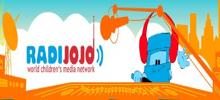"Education" as a music genre is an intriguing and multifaceted category that blends the realms of learning, creativity, and auditory stimulation. This genre is designed to enhance cognitive functions, stimulate intellectual curiosity, and create an immersive environment conducive to study, concentration, and mental growth. The music within this genre often features intricate compositions that are both soothing and intellectually engaging, making it ideal for background listening during academic pursuits or professional tasks.
The sonic landscape of "Education" music is diverse, incorporating elements from classical, ambient, electronic, and even experimental genres. Composers in this field focus on creating melodies and harmonies that promote mental clarity and focus. The tempo usually remains moderate to slow, ensuring that the listener's mind can absorb information without being overstimulated. Subtle changes in rhythm and dynamics keep the music interesting while maintaining a consistent atmosphere that supports learning.
One of the defining characteristics of "Education" music is its use of nature sounds, white noise, and other ambient textures. These elements help to create a calming environment that blocks out distractions and enhances concentration. The integration of these natural sounds can also have a therapeutic effect, reducing stress and anxiety levels, which are common barriers to effective learning.
Lyrics in "Education" music are often minimal or non-existent, allowing the listener to fully immerse themselves in the auditory experience without verbal distractions. However, when lyrics are included, they typically convey positive affirmations, motivational quotes, or educational content that reinforces the theme of intellectual growth and personal development.
The genre also embraces technological advancements, with many compositions utilizing binaural beats and isochronic tones to stimulate brainwave activity. These techniques can help listeners achieve a state of heightened focus and mental alertness, making it easier to absorb and retain information. The use of 3D audio and spatial sound design further enhances the immersive quality of "Education" music, providing a multi-dimensional listening experience that engages both hemispheres of the brain.
In addition to its cognitive benefits, "Education" music often incorporates elements from different cultures and musical traditions, promoting a global perspective on learning. Composers may draw inspiration from traditional instruments, rhythms, and melodies from various parts of the world, creating a rich tapestry of sounds that reflect the diversity of human knowledge and experience.
The impact of "Education" music extends beyond individual study sessions, influencing educational institutions and workplaces that seek to create environments conducive to learning and productivity. Schools, universities, and corporate settings are increasingly incorporating this genre into their spaces to foster a culture of continuous improvement and intellectual curiosity.
In conclusion, "Education" as a music genre is a powerful tool for enhancing cognitive functions, promoting mental well-being, and creating an immersive environment for learning and personal growth. Its diverse sonic landscape, integration of natural sounds, use of advanced audio technologies, and cultural influences make it a unique and valuable addition to the world of music. Whether used in academic settings, professional environments, or personal study sessions, "Education" music offers a transformative experience that supports the pursuit of knowledge and intellectual development.
 1.4k
Tanzania, Moshi Education 128 kbps MP3
1.4k
Tanzania, Moshi Education 128 kbps MP3 Cameroon Education
Cameroon Education China Education 16 kbps MP3
China Education 16 kbps MP3


















 1
1



















